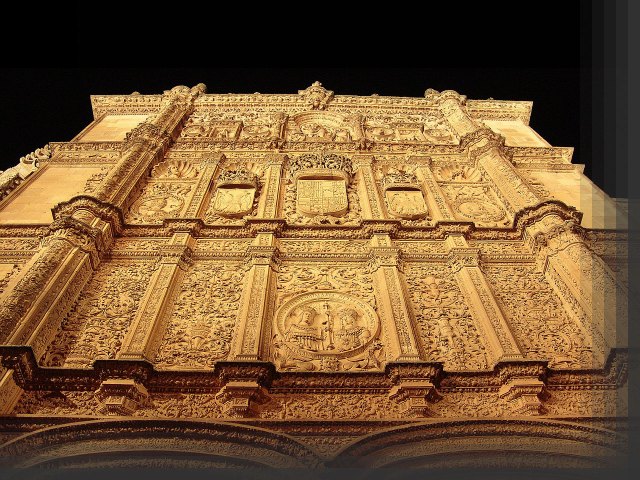
The University
Founded in 1218, the University was to become one of the most prestigious academic centers in Europe and in the Hispanic world: an epicenter of learning and the first institution to campaign for human rights of the native populations in the world. The first universities founded in Hispanic America since 1551 by the Spanish kings followed the model and structure of the University of Salamanca. Over 70% of the universities created in the XVIth and XVIIthcenturies consider the University of Salamanca as their âalma materâ.
Like the University of Bologna, Salamanca gave preference to the study of Civil and Canon Law over theology and philosophy favored by the University of Paris. The School of Salamanca, formed mostly by Dominican theologians such as Francisco de Vitoria (1483â1546), Domingo de Soto (1494â1560), TomĂĄs de Mercado (1525-1575), the Agustinian MartĂn de Azpilcueta (1492-1586), and the Jesuits, Luis de Molina (1535-1600) and Francisco SuĂĄrez (1548-1617), among many others, brought about a Renaissance in European thinking. They adapted the teachings of Thomas Aquinas to the challenges of a new political order created by the conquest of the Americas. Their contributions are notable in the domain of natural law, international law and economics, disciplines of which they can be considered founders. They were the first to raise their voice in the defense of the American Indians. Their defense of the rights and dignity of indigenous populations was based on Scholastic concepts that affirmed the intrinsic dignity of man in virtue of which, the native populations could not be conceived of as slaves. The juridical doctrine of the School of Salamanca is a vindication of the ânatural rightsâ of the individual transposed to those of the indigenous populations of the Spanish Empire. The School of Salamanca reformulated the concept of natural law arguing that all humans, including the natives, share the same nature and hence are entitled to the same rights to life and liberty. Francisco de Vitoria drew on Aquinasâs Roman law concept of ius gentium (âThe law of nationsâ) and argued that the Spanish imperial policy in the New World should not be a violation of human dignity. He defended the nativesâ corporeal rights (right to life), economic rights (rights to own property), spiritual rights (right to freedom of thought and human dignity). Francisco de Vitoria was a supporter of the âjust war theoryâ, De iure belli. He criticized the Spanish intervention in native affairs and contended that the use of force could be justified only for the protection of victims seized for human sacrifice or for the defense of those whose human dignity was being violated by others. Neither the pope nor the emperor could lay claim on the American Indiansâ lives or property. No violent action could be taken against them, nor could their land be seized unless the Indians violated the lawful rights of the Spanish. The philosophy of the School of Salamanca was to have a tremendous impact on the Catholic Kings and on Charles V determining the course and nature of Spanish imperial policy in Hispanic America.
The University of Salamanca is also linked to Christopher Columbusâs discovery of the Americas and the creation of the first Grammar of Spanish Language by Antonio de Nebrija (1492). Over the centuries Salamanca and its university has attracted famous writers, musicians, philosophers, and humanists such as Fray Luis de LeĂłn, Francisco Salinas, Miguel de Cervantes, Saint John of the Cross, Santa de Teresa de JesĂșs, Luis de GĂłngora, Mateo AlemĂĄn, Vicente Espinel, Francisco de Quevedo, CalderĂłn de la Barca, and Lope de Vega; adventurers like Christopher Columbus, conquistadores and explorers like HernĂĄn CortĂ©s o Francisco VĂĄzquez de Coronado. The University of Salamanca is also linked with the first women university students and teachers: Beatriz Galindo, Spanish Latinist and scholar, tutor of the children of Queen Isabel of Castile âof Catherine of Aragon future wife of Henry VIII of England and of Juana of Castile, future wife of Philip of Habsburgâ; and her colleague, LusĂa de Medrano, the first woman ever to give classes at a university, substituted for Antonio de Nebrija in 1508.
In the XVIIIth the writer poet, dramatist, doctor, mathematician, priest and professor at the University, Torres Villarroel would bring from Paris the âround booksâ, as the world globes were called, and enlarge the picaresque tradition with his autobiographical Vida, ascendencia, nacimiento, crianza y aventuras del Doctor Don Diego de Torres Villarroel . In the XXth century the existentialist philosopher and writer Miguel de Unamuno, scholars and poets such as DĂĄmaso Alonso, or the postwar novelists such as Torrente Ballester, or contemporary poets such as Antonio Colinas, Juan Antonio GonzĂĄlez Iglesias continue the literary heritage.
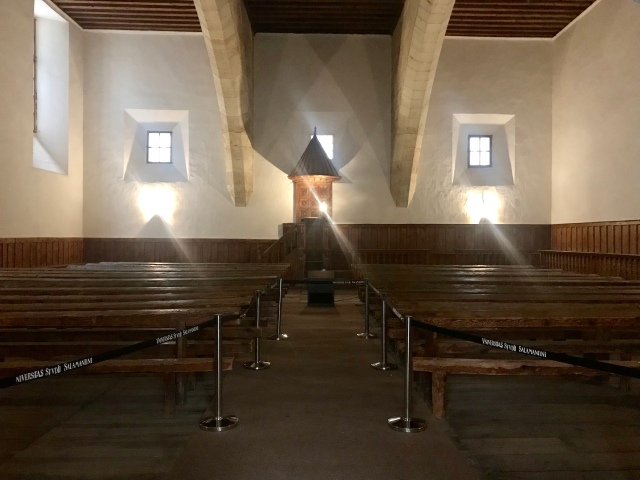
Currently, Salamanca draws undergraduate and graduate students from across Spain and the world; it is the top-ranked university in Spain based on the number of students coming from other regions. It is also known for its courses for Spanish language for non-native speakers, which attract more than two thousand foreign students each year. Today the University of Salamanca is an important center for the study of humanities and is particularly noted for its language studies, as well as law and economics.

The Old University Building and Courtyard
C/ Libreros, 30, Phone: (+34) 923 29 44 00-1150
The Old Building (Escuelas Mayores) of the University was built between 1415-1433 and has a splendid Plateresque façade created between 1518 and1529.
The Plateresque, meaning âas is the work of a silversmithâ, is a Renaissance or Proto-Renaissance style developed in Spain and its territories in the late XVthcentury and in vogue during the next two centuries. This style reached its apogee in the buildings of Salamanca during the reign of Charles V, Holy Roman Emperor, although it flourished in other cities such as LeĂłn, Burgos and in Hispanic America, especially in Mexico. It is characterized by ornate decorative façades covered with floral designs, chandeliers, festoons, fantastic creatures and all sorts of configurations. The spatial arrangement, however, is more clearly Romanesque or Gothic-inspired. The sandstone of Salamancaâs buildings proceeds from local quarries. In keeping with student tradition, if you want to pass your exams, you must find the little frog on the University façade.

The Old Library
Founded in 1254 by Alfonso X âthe Wiseâ, the Old Library is also the first university library in Europe. With holdings of 2.774 manuscripts (the oldest dates back to 1059), 483 incunabule (books printed before 1500), and 62.000 printed volumes previous to the XIX century, it has the third most important holdings after the National Library in Madrid and that of the Escorial.
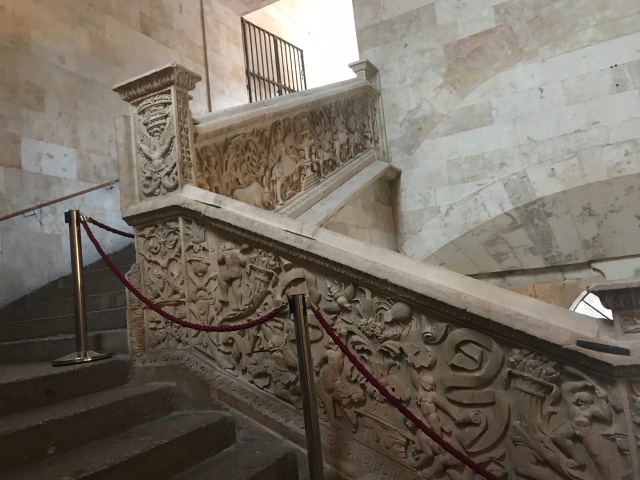
You access the Old Library climbing the breathtaking Renaissance staircase unique for its time, in early Plateresque style of the beginning of the XVIthcentury. The bas-reliefs of the staircase describe the studentsâ road of initiation into higher wisdom. The Library was built in Baroque style, in 1749, by the architects GarcĂa de Quiñones and Larra Churriguera.
Inside the old building, you can visit the Paraninfo, the Chapel (where students still get married today) and the lecture hall where Fray Luis de LeĂłn taught and which preserves today the original furniture and benches.
Next to the Old Building are the Hospital de Estudiantes (Student Infirmary), currently the Chancellory, and the Escuelas Menores building (1533). Across the courtyard adorned with the statue of Fray Luis de LeĂłn do not miss the Cielo de Salamanca, an impressive representation of the astrological map by Fernando Gallego, which once covered the ceiling of the ânewâ library. These frescos of the constellations and zodiac signs were rediscovered quite accidentally during the renovation work of the building. Now they are housed in the Escuelas Menores.
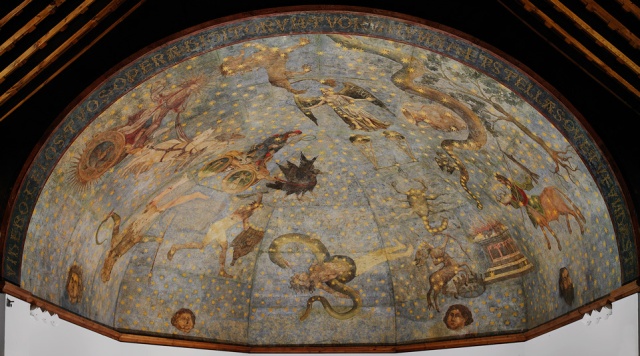
On almost all university walls, you will see âvĂtoresâ wall inscriptions in dark red color. These were originally drawn with colors made of bullâs blood and indicate the name of the graduated Doctorate students.
These buildings are open from 16 September to 31 March: Monday-Saturday (except bank holidays), from 10:00-19:00 (last entry 18:30). From 1 April to 15 Sept.: Monday-Saturday (except bank holidays) from 10:00-20:00 (last entry 19:30). Sundays and bank holidays: 10:00-14:00 (last entry 13:30).
 Tickets, which give access to the Escuelas Mayores, the Colegio Arzobispo Fonseca, and the Exhibition of the Universityâs XVIIIth Centenary, cost: 10⏠(normal price); 5⏠(pensioners, large families, students and groups of more than 20 people). Free for children under 12 and card-carrying members of the USAL. Audio guides can be rented for 2âŹ.

La Plaza Mayor â The Main Square
Built between 1729 and 1755 by Alberto de Churriguera and AndrĂ©s GarcĂa de Quiñones (the town hall), the Plaza Mayor is a prime example of Baroque architecture and definitely one of the most beautiful in Spain and in the world. Currently as in the past, it has been the venue of the cityâs main religious and civil celebrations, as well as concerts and book fairs.
The medallions affixed to the pillars of the Main Square have carved images of Spanish monarchs as well as other illustrious figures of saints and philosophers such as Charles V, Alfonso XI, Ferdinand VI, Cervantes and St. Theresa. The façades of the buildings are three levels high, with semicircular arches and balustrades. In 1954 the gardens planted in the middle of the XIXthcentury were removed. Among gourmet restaurants and bars, you can find Café Novelty, one of the few Art Nouveau buildings which have survived, where Miguel de Unamuno and later Gonzalo Torrente Ballester used to hold literary gatherings.
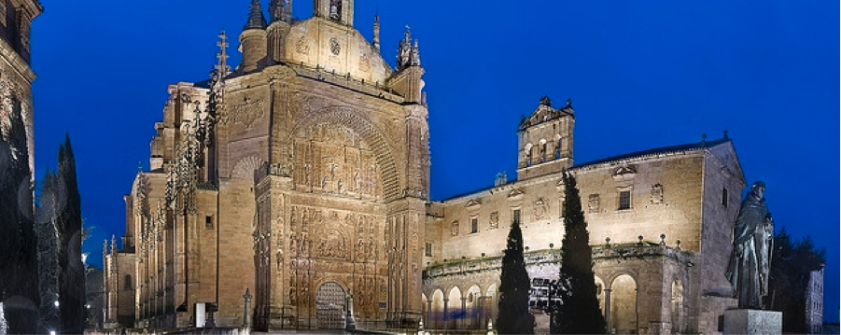
The Dominican Convent of San Esteban
Plaza del Concilio de Trento, s/n, Phone: (+34) 923 215 000
The Convent of San Esteban is a Dominican convent with more than 700 years of history. Its building was begun in the XVIth century on the orders of Cardinal Fernando Ălvarez de Toledo, son of the second Duke of Alba, and executed by the architect Juan de Ălava. Mainly Plateresque, the convent also features Baroque and Gothic elements. It is famous for having housed prominent figures of the School of Salamanca, Francisco de Vitoria, Domingo de Soto, Melchor Cano, Diego de Deza as well as famous visitors such as Christopher Columbus, St Teresa and St Ignacio de Loyola.
The history of the Convent is linked to Christopher Columbus who came here looking for help from the Dominican abbot, Fray Diego de Deza, the confessor of Queen Isabel, whom he hoped to convince to intervene on his behalf and get support for his voyage to the Indies. The backing of the Dominicans and of the University was decisive in the Catholic Kingsâ decision to give their approval to Columbusâs venture.
The room where these conversations were held is called De Profundis. The Dominicans held Council in a very small room where they decided to back one of the greatest discoveries of the European Renaissance.
Next to the cloister is the St Teresa confessional where the saint used to make her confessions in 1571.
Of particular note is the conventâs carved facade, its altarpiece, cloister and the Renaissance staircase designed by Domingo de Soto, which is a mathematical and engineering marvel.
The convent can be visited as follows: From 5 Nov. to 16 March: from 10:00-14:00 and 16:00-18:00 (last entry 17:15). From 16 March to 5. Nov: from 10:00-14:00 and 16:00 to 20:00 (last entry 19:15). It is closed on 25 Dec. and 1 Jan. The museum closes in the afternoon on Sundays and bank holidays and on Mondays morning and afternoon. Tickets are 3,50⏠per person except for groups of over 20 people, students and pensioners (2,50âŹ). There are also guided visits at no extra cost from 1 May to 15 Sept., on Fridays at 17:00 and Sundays at 12:00 and 17:00.
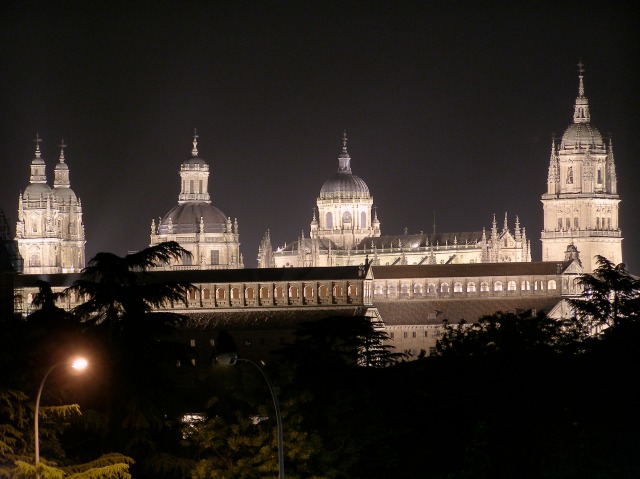
The Pontifical University and La ClerecĂa
C/CompañĂa, 5; Booking: (+34) 923 277 174  info@torresdelaclerecia.com
La ClerecĂa is currently part of the Universidad Pontificia and was founded at the order of queen Margarita of Austria and king Philip III as a main Jesuit training center. Missionaries were taught to spread the Catholic faith all over the world. Although The Royal College of the Jesuit Order was built following the plans of GĂłmez de Mora in 1611 in the sober style of Juan Herrera (clean volumes, symmetric and balanced with no decoration as in the Escorial), during the 150 years of its construction, the Baroque taste prevailed producing the most magnificent examples of a Baroque courtyard (Patio Barroco) and staircase (Escalera Noble). By the time the building was completed in 1767, the Jesuit Order had been expelled from Spain by Carlos III. The building suffered abandonment, war, ecclesiastical confiscation and ruin. In 1946 it was reformed and has since housed the Pontifical University.
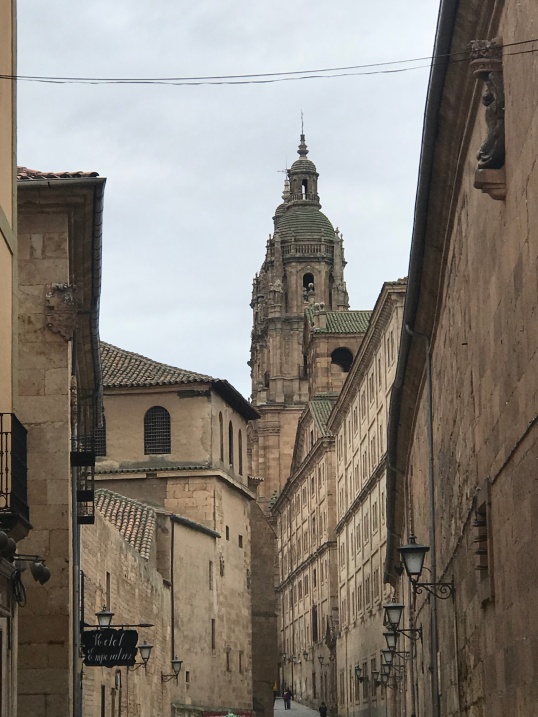
The ClerecĂa contains the permanent exhibitions of Vita Ignatii (a series of paintings by the Napolitan Sebastiano Conca (1679 â 1764) of the life of St Ignatius of Loyola that adorn the Cloister) and Scala Coeli (âStairway to Heavenâ in Latin). The tour gives visitors an opportunity to discover the interior of the Colegio Real de la CompañĂa de JesĂșs and the ClerecĂa de San Marcos church with its magnificent Baroque altarpiece, and to climb the ClerecĂa towers and enjoy a breathtaking panoramic view of the city. Unamuno used to call Salamanca âSoto de torresâ (âa copse of towersâ) meant to bring souls closer to heaven.
Open: from Monday to Friday: 10:30-12:45 and 16:00-17:30. Saturdays: 10:30-13:30 and 16:00-17:30. Sundays and bank holidays: 10:30-13:30
Tickets are 3⏠(2,50⏠for groups). Guide tours are available upon request.
The Scala Coeli (ClerecĂa Towers) exhibition is open every day except 23/12 and 1/1. From March to November: 10:00-20:00 (last entry 19:15). December, January and February: 10:00-18:00 (last entry 17:15). 24 and 31 Dec.: 10:00-12:15 (last entry)
Individual tickets: 3,75⏠and 3,25⏠for groups. The joint ticket to Vita Ignatii and Scala Coeli is 6⏠and 5⏠for groups. Entry is free on Tuesdays 10:00-12:00 (except on bank holidays, Holy Week and July and August). Night visits are also available on Fridays and Saturdays of July, August and September from 22:00-24:00 (last entry 23:30). The visit costs 5âŹ.

Casa de las Conchas â The House of Shells
C/ CompañĂa, 2
The Casa de las Conchas is a XVth century palace which gets it name from the over 300 seashells that decorate its façade. The Maldonados, former owners of the house, belonged to the Order of Santiago. Salamanca is situated on the route to Santiago and the seashell is an emblem of the pilgrimage. The house is currently used as a public library.
Visit to Casa de las Conchas is free. Open: Monday to Friday: 9:00-21:00; Saturdays: 9:00-15:00 and 16:00-19:00; Sundays and bank holidays: 10:00-14:00 and 16:00-19:00
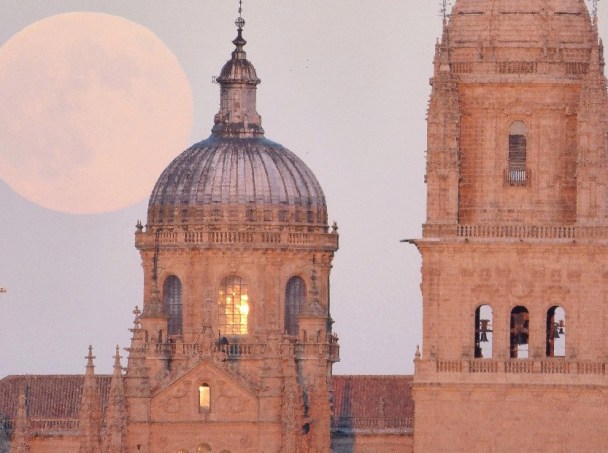
The Cathedrals
Plaza de Anaya, s/n (Catedral Nueva) â Entry to both
C/ Cardenal Pla y Deniel, s/n (Catedral Vieja), Phone: (+34) 923 217 476
https://www.youtube.com/watch?v=jE3DK7pHvRs
Salamanca has two Cathedrals. The Old Cathedral was built in Romanesque style during the XIIth and XIIIth centuries. Marvelous Florentine altarpiece 1430-1450 and polychrome tombs and walls. Construction of the New Cathedral was started in 1513 promoted by the Catholic Kings and completed in 1733. It harmonizes different styles from Gothic to the Baroque and the Neoclassic. Its architects and mason artists were Juan y Rodrigo Gil de Hontañón, Juan de Ălava, Juan SetiĂ©n GĂŒemes, PantaleĂłn PontĂłn, the brothers Churriguera and Juan de Sagarbinaga. It is one of the last Gothic cathedrals to be built in Spain. The twentieth century contribution to the decoration of the Cathedral is the sculpture of an astronaut in one of the formerly empty niches of the façade.

The Cathedral treasures paintings and sculptures from the XVth, XVIth and XVIIth centuries, featuring The Tryptich of St. Andrew  by Juan de Flandes, The Virgen of the Rose and the Portrait of St. Catherine by Fernando Gallego. One sculpture, the Tomb of Anaya, dating from the XVth century, has been attributed to Francisco de Salamanca.
On October 31, 1755, the terrible Lisbon earthquake and tsunami seriously damaged the tower of the Cathedral. The recently finished tower did not collapse and in gratitude every year, the Mariquelos, the name of the family who lived inside the Cathedral and who held this position from generation to generation, used to climb to the top of the temple and sing a song in praise of God. In 1976, FabiĂĄn Mesonero Plaza was the last member of the Mariquelo family to climb the tower. Yet in 1985, the Salmantino Ăngel Rufino de Haro decided to continue this thanksgiving tradition of climbing the tower. He is popularly known by the name of Mariquelo and, dressed in the local charro costume and equipped with musical instruments, he sings the charrada.
Opening hours: From October-March: Every day from 10:00-18:00 (last entry 17:15). April-September: Every day from 10:00-20:00 (last entry 19:15). They are closed on 1/1, 25/12 and on Holy Thursday and Good Friday, but open on 24/12 and 31/12 from 10:00-14:00. Tickets: Individual 4.75 Euros / Groups (20 people), pensioners and students: 4 Euros / primary school students: 3.25 Euros. Free entry Tuesday between 10.00 and 12:00.
The entry ticket includes the visit to the Old Cathedral, the New Cathedral, the cloister and the museum. The prices are: 5⏠(normal ticket); 4⏠(pensioners, large families [parents], students and groups of more than 20 people); 1,50⏠(unemployed people, large families [children]); 3⏠(children from 7 to 16 and/or school groups). Individual tickets include an audio guide.
Ieronimus (Climbing the Cathedral Towers)
Entrance via the Tower Gate in Plaza. Juan XXIII
The tour explores the Cathedral from the inside and surprises visitor with the discovery of a different city within a city. Climbing through the Cathedralâs towers, iconic sites and signature of Salamancaâs skyline, the visitors get a privileged insight into the history of its construction while exploring its different levels, aisles, battlements, pinnacles and gargoyles, which offer a spectacular and singular perspective of the Old Cathedral and its wonderful altarpiece; of the New Cathedral and its interior walkways; and of the whole city from interior terraces and watchtowers. These exceptional views constitute an incredible discovery and are new wonderful gifts from the Cathedral to the city.
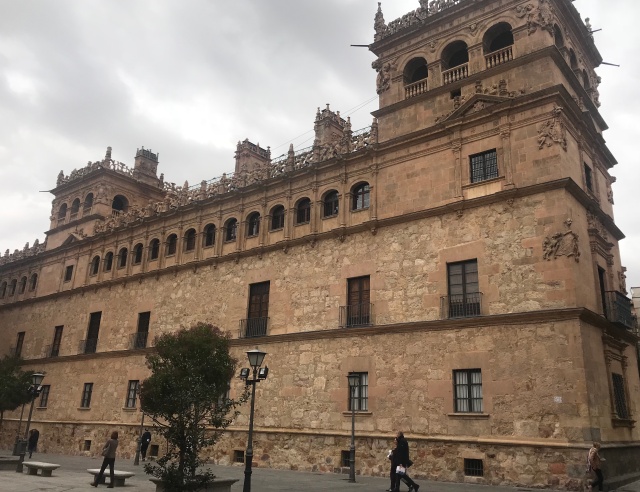
Palacio de Monterrey
Plaza de Monterrey, 2
The Palacio de Monterrey was built by the third Count of Monterrey, Don Alonso de Acevedo y ZĂșñiga. Declared a National Monument since 1929, it served as a model for later constructions built in Latin America. It belonged to the Duchess of Alba. It has been recently opened to the public.
There are guided tours every day at 10:30, 11:30, 12:30, 13:30, 17:00 and 18:00. Tickets must be bought beforehand at the Tourist Office (Plaza Mayor, 32). Entry is 5⏠(normal ticket); 3⏠for children aged 6-12 and disabled people (more than 33%); free for children under 6. Entry is free on Monday afternoon but a ticket must nevertheless be requested on the same Monday at the Tourist Office.
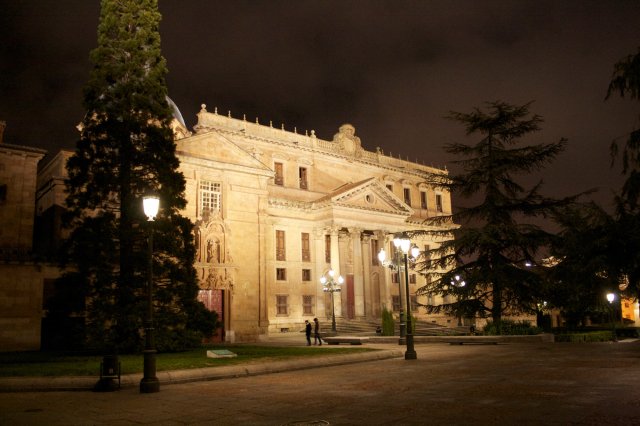
Plaza de Anaya
Former Colegio Mayor de San Bartolomé founded in 1401 by Diego de Anaya, it is currently home to the Faculty of Philology. Built in a neoclassical style, its construction, by José Hermosilla and Juan de Sagarvinaga, dates back to 1760 and it was used as a university residency until 1798. Its most distinguishing features are its façade, the cloister and the imperial staircase inside the building adorned with a bust of Miguel de Unamuno by Victorio Macho (1930). During the Napoleonic occupation, General Thiébault used the Anaya Palace as military headquarters.
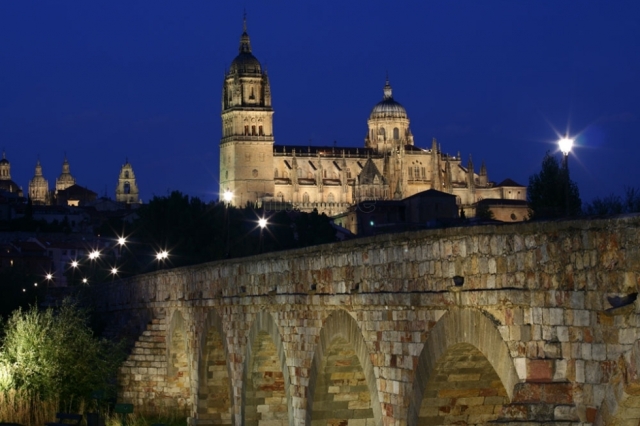
The Roman Bridge
Originally constructed in the year 89 A.D., the Roman Bridge, made of 15 granite arches, helped smooth trade on the Ruta de la Plata, a route that was of major economic and strategic importance in Roman times. The bridge was reconstructed after being damaged by floods in the XVIIth century. Especially at night, it offers a privileged view of the Cathedral and of the spectacular stained glass windows of the Art Nouveau & Art Deco Museum.
Note at the bridgeâs end the pre-Roman sculpture of a boar sculpture, a sign of protection, and the statue of Lazarillo de Tormes guiding the blind beggar, representing a scene in one of the great pieces of universal literature.
Las Dueñas Convent
Plaza Concilio de Trento s/n, Phone: (+34) 923215442
The convent was founded in 1419 by Juana Rodriguez Maldonado, for nuns belonging to the nobility, in what was formerly her own palace. Later it became a Dominican monastery. The church and the magnificent two level cloister were built around 1533.
Open: Winter: Monday to Saturday: 10.30 to 12.45 / 16.30 to 19.30.
Summer: Monday to Saturday: 10.30 to 12.45 / 16.30 to 18.45.
Closed Sundays and public holidays.
Price: Tickets: 2 Euros / 1 Euro groups (of over 20)
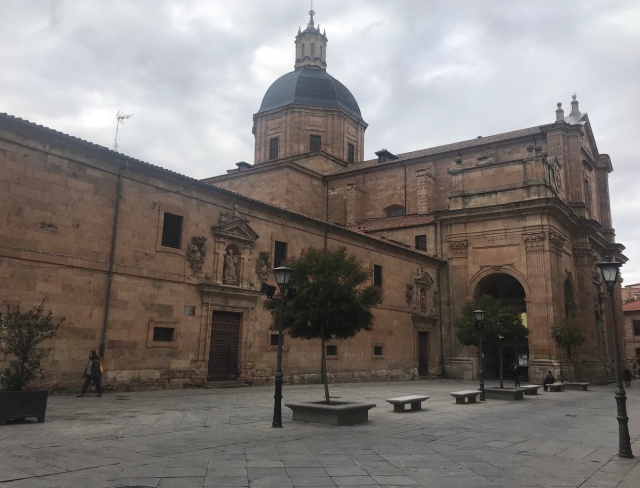
The Convent of the Agustinians and the PurĂsima
Plaza Agustinas, Phone: (+34) 610 91 43 07
Built in in 1636 by Manuel de Fonseca y ZĂșñiga, VI Count of Monterrey, as a convent for his daughter InĂ©s Francisca de la VisitaciĂłn, the first prioress, and as a family pantheon by Italian architect Bartolomeo Pichatti with the help of the Spanish architects Juan GĂłmez de Mora, Francisco de la Hoya and Antonio de Carassa. The church was situated in front of the Monterrey Palace, home of the patron. It is unique for its Italian influence and use of inlaid polychrome marble, a style quite unusual in Castile. The church is also famous for its valuable paintings. Manuel de Fonseca y ZĂșñiga was one of the most important patrons and art collectors in Spain and this explains the artistic treasures of the church. The altarpiece displays the Immaculate Conception by JosĂ© Ribera (1635) a painting which created a genre in the Golden Age. Also by him are the PietĂĄ, and St. Jenaro. Of the many paintings he himself brought from Italy where he had served as Viceroy of Milan, are a Rubens St. Agustine (painted between 1614-1620), Guido Reni St. John the Baptist, Giovanni Lanfranco St Nicholas Tolentino, The Annunciation, Massimo Stanzione The Virgin of the Rosary, Francesco Bassano The Crucifixion. The statues of the praying/kneeling counts in the niches on both sides of the altarpiece are by Giuliano Finelli.
Calixto and Melibea Gardens
Calle Arcediano, 20. Closes 10:30 PM
A romantic garden near the old ramparts with a nice view of the river, famous because it is the setting of the love encounter of Calixto and Melibea, the two characters of Fernando de Rojasâs famous drama La Celestina (1502).
The Ursulines Convent
Calle Las Ărsulas 2, Phone: (+34) 923 21 98 77
The convent was founded in the middle of the XVth century by Alfonso de Fonseca and Sancha Maldonado who also became the first nun of the monastery. Since 1992, it has been run by the order of Santa Clara cloistered nuns. It has a beautiful coffered ceiling, a fusion of Italian and mudĂ©jar styles, as well as an altarpiece by Juan de Borgoña (XVIth century). Visit the museum which has paintings by Luis Morales (1512-1586) also called âEl Divinoâ (âthe Divineâ)
Open: Winter: Tuesday to Sunday: 11:00 to 13:00 / 16:30 to 18:00
Summer: Tuesday to Sunday: 11:00 to 13:00 / 16:30 to 18:00
Price: Tickets: 2 Euros. Closed the last Sunday of each month.
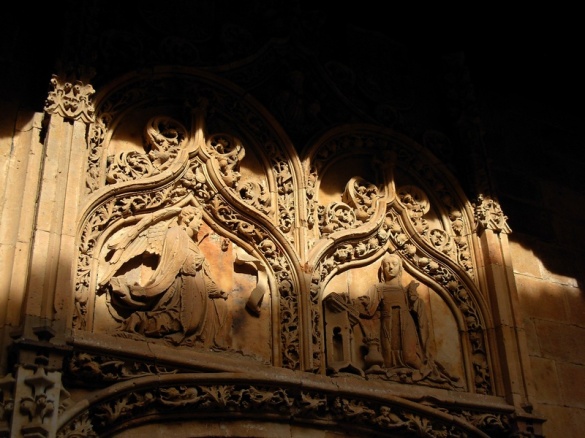
San Benito Church
Calle Prado 7
(Photo: Salamanca.com)
The church was built in 1104 on the site of the former Romanesque temple in the area inhabited by Galicians. It was damaged by the warring nobility factions, the bands of San Benito and Santo TomĂ©, who fought against one another during the XVth century. This period of discord ended thanks to the appeasing intervention of San Juan de SahagĂșn, the patron saint of the city. The facade and exterior buttresses have the coats of arms of Fonseca, Acevedo, Ulloa y Maldonado. The church was repaired in 1490 by Alonso de Fonseca II in the Flemish Gothic style. The altarpiece is by Alejandro Carnicero, and the Calvary sculpted by Diego de SiloĂ© (1540). Mostly closed, visit it at least from the outside.
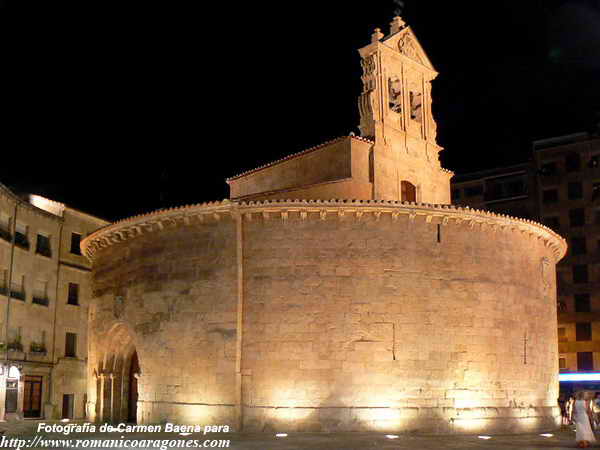
San Marcos Church
Plaza San Marcos, S/N, 37002 Salamanca
(+34) 923 21 25 25
Erected in the late XIth early XIIth century, next to the former city wall by the Gate of Zamora, it is a beautiful Romanesque round church and one of the oldest in town.
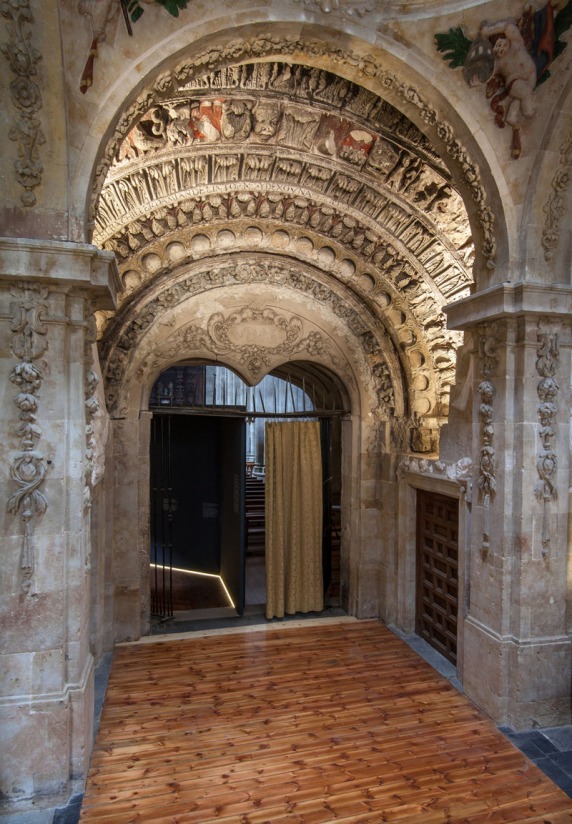
San MartĂn Church
Plaza del Corrillo, Phone: (+34) 610 91 43 07
Considered one of the most beautiful Romanesque churches of Salamanca, San MartĂn was founded 1103 by Count MartĂn de FernĂĄndez on a former shrine devoted to St. Paul. Erected in the area resettled with people from the Toro region, it was then near the market. Over the years the church has been squeezed in by buildings that have surrounded it. It has two doors. Very beautiful tombs inside. It was declared a national monument in 1931. Extensive studies are currently being undertaken in attempts to rectify the very obvious architectural problems the building suffers.
Museums
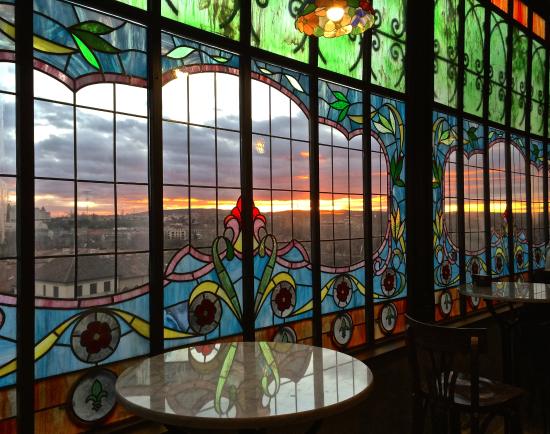
Art Nouveau & Art Deco Museum. Casa Lis
Calle Gibraltar,14, Phone: (+34) 923 12 14 25
This incredible mansion with its awesome stained-glass windows houses the XIXth and early XXth century decorative art collections donated by Manuel Ramos Andrade, a Salamanca antique dealer. The collection comprises some 2.500 pieces, all excellent quality and in a perfect state of conservation, by famous artists such as RenĂ© Lalique, FabergĂ©, Ămile GallĂ©, ThĂ©odore RiviĂšre, Ernest Barrias, Jean-LĂ©on GĂ©rome. It is the most visited museum of Castile and LeĂłn.
Tickets: 4.00 Euros / 2.00 Euros: Pensioners, students and groups (of more than 10). Free entry on Thursday between 11:00 and 14:00.
Unamuno House & Museum
Calle Libreros 25, Phone: 923 29 44 00 (Ext. 1196)
http://www.unamuno.usal.es
Next to the Old Building of the University of Salamanca, in what used to be the quarters of the University Chancellor, is the Museum of Miguel de Unamuno, the last Chancellor who inhabited it. The house guards his furniture, writings, library, manuscripts and keepsakes.
Tickets: 3 Euros / 1.50 Euros groups, students and pensioners.
Free entry to students studying in Salamanca.
Museum of Automotive History
Location: Plaza del Mercado Viejo, Phone: (+34) 923 26 02 93
http://www.museoautomocion.com
The former FĂĄbrica de la Luz (Light Factory) has been transformed into the Automotive History Museum. A Mecca for automobile fans with hundreds of cars which have their own history to tell.
Tickets: -3.50 Euros / 2 Euros: students, pensioners and groups (of more than 10).
Free entry on the first Tuesday of each month between 17:00 and 20:00.
Food
The dry, cool climate of the region provides Salamanca with savory cured meats, ibĂ©rico, flavorful cheese and delicious wine. Local cattle are raised for the singular morucha beef. Among local delicatessen: cured ham, jamĂłn ibĂ©rico, of a local Iberian pig breed some of which, fed in holm-oak groves on acorns, receive the appellation âde bellotaâ (acorn fed). Special dishes: cochinillo, (âsuckling pigâ), veal, suckling goat (âcabritoâ) or lamb (âcordero lechalâ).
The wine production is excellent and offers a wide range from delicate fruity whites, verdejo, to hearty reds, tintos. Look out for wines produced in the two most important local regions, which are less known, yet superior to many of the widely sold wines abroad: try the unforgettable Ribera del Duero and the Sierra de Salamanca wines. Also the unfortunately lesser known Toro wines have gained special admiration from connoisseurs.
